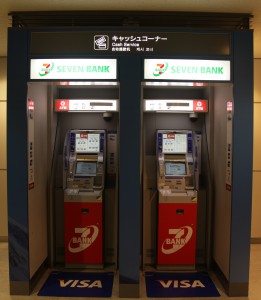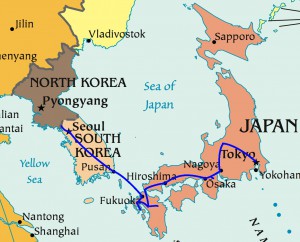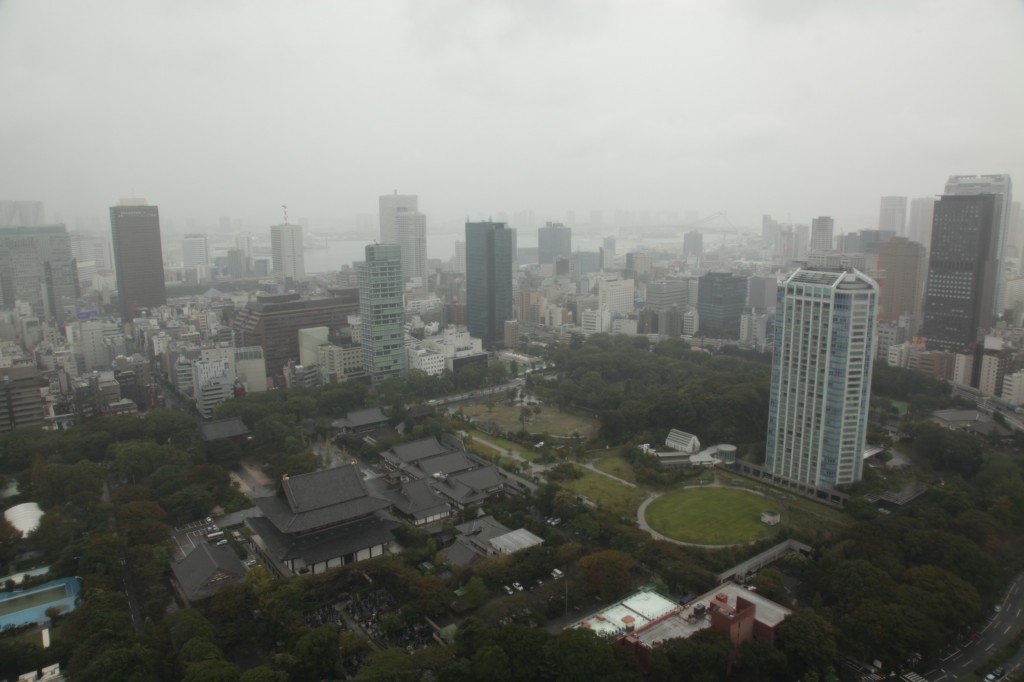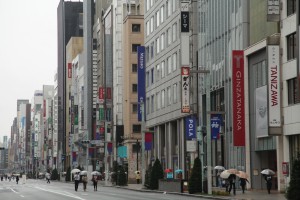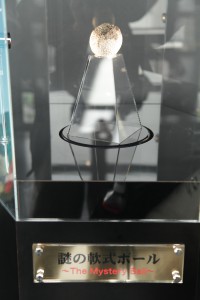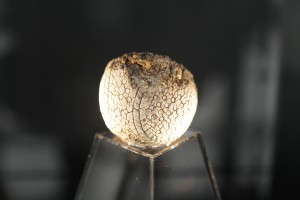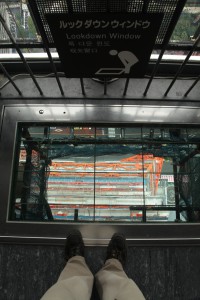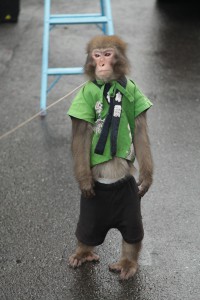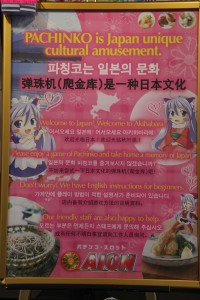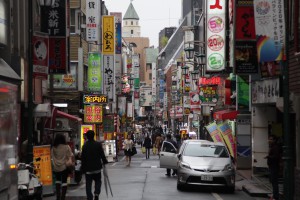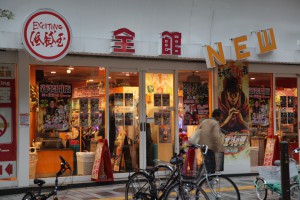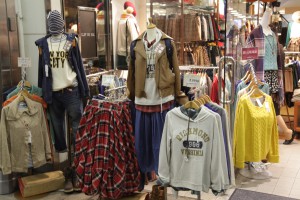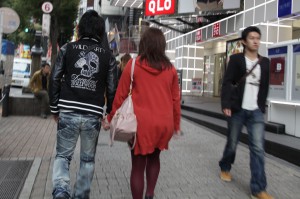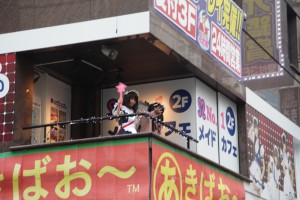Tag Archives: japan
Notes on Japan
Home now. According to the pedometer app on my phone, I walked a total of 534,826 steps in the last 22 days, or about 247 miles, an average of 11.227 miles a day.
Some additional notes:
- The paper money in Japan is all new. Every time I got change anywhere, I got bills that looked like they had never been used. In the two weeks I was in Japan, I never saw a bill that had even been folded. I can’t even guess how they accomplish that.
- Trash cans are surprisingly hard to find. I walked miles with trash stuffed in my bags because I couldn’t find any way to get rid of it. And when you do find a trash can, it will only accept a certain type of recyclable. It might be big enough for your Starbucks cup, but not the lid. Or it’s only for plastic bottles.
- Train station restrooms don’t have paper towels or air dryers. You just have to dry your hands on your pants. But many of them do have hooks next to the urinals so you have some place to put your umbrella. A matter of priorities, I guess.
- Japan often uses songs familiar to Americans in unexpected ways. There’s no cultural or lyrical association, so they just use the tunes. I was changing my shirt in a restroom in the Nagano train station and I heard a familiar melody that I couldn’t place. It was played in an 8-bit video-game style. After a few seconds, I remembered the lyrics:
Jesus loves me, this I know
For the Bible tells me so
Most intersections play the familiar chirping sounds when the light changes, but some of them play songs. One of the songs is Comin’ Through the Rye.
I also heard Yankee Doodle with Japanese lyrics playing from a video screen outside Akihabara station.
- In Japan you get wet wipes with everything. They’re a bit skimpy with regular napkins, but you’ll always get a wet wipe. In Korea the napkins have the consistency of tissues, but rougher. They’re in boxes at the tables, so you can have as many as you like, but they fall apart when you try to use them.
- Why do Japanese people live so long? They don’t do anything right. They smoke, they drink, they eat a lot of pastries and don’t exercise and work long hours in stressful jobs. And they outlive everyone on the planet.
Why? Is it all the green tea that they drink? Is it genetics? Is it just a result of counting dead pensioners?
I’m going to start smoking and drinking, just in case.
- 7-11 is a bank.
UPDATE: My route from start to finish.
The sky above the port was the color of
television, tuned to a dead channel
Central Tokyo
I couldn’t get a reasonably priced hotel room anywhere for my last night, so I’m spending $250 for a hotel downtown. Plus another $3 for wifi.
It’s been raining all day, so I bought an umbrella at Tokyo Station and wandered around the Imperial Garden in the rain. The garden itself is nice enough, but what really makes the whole palace area stand out are the many fortifications and moats. I think that there are probably a lot of places that could be improved by adding moats.
Next I walked through Ginza, which is possibly even more ritzy than the Champs-Élysées, given that they don’t seem to have a McDonalds.
I still had some time to kill before I could check in, so I went to the Tokyo Tower.
Tokyo Tower is 333 meters high, with observation decks at 150 and 250 meters. I could only go to the lower observation deck, because the upper one was closed for “maintenance,” which I think we all know is code for “monster damage.”
In addition, there’s a Mystery Ball.
Here’s a close-up of the Mystery Ball.
I have my own ideas about what’s going on with that Mystery Ball, and I’m afraid it means that Tokyo Tower will end up sustaining even more monster damage.
It’s not even the tallest structure in Tokyo anymore. That would be the Skytree, which you can see in the distance here. Monsters have not knocked that over yet, as far as I know.
Tokyo Tower also has a Lookdown Window. Here’s what it looks like to look down the Lookdown Window.
When I got back to the bottom of the tower again, there was a monkey.
I don’t know why he was there. He’s nowhere near big enough to knock down the tower.
Saitama Manhole Cover
Dramatic Tokyo Earthquake Development!
Early this morning I woke up to swaying from a 7.1 earthquake off the coast of Japan.
Then I went back to sleep.
Exciting Pachinko Action in Shinjuku!
Pachinko is Japan unique cultural amusement, it says here on this sign in Akihabara.
But that’s clearly for the tourists. For the real experience, I went to Shinjuku.
First I went walking around Shinjuku a bit. It was late afternoon, so things seemed a bit more lively than when I was here yesterday morning. The PA system was blasting out a boogie-woogie by a female singer where the only words I could understand were “boogie-woogie” and “Shinjuku.” When it finished, there would be a short announcement of some sort and it would start over again. I probably heard it at least eight times.
I went down one street I hadn’t seen before. It looked like it might have pachinko parlors. And it did, but as soon as I’d gone about half a block, I noticed that people were looking at me. Not menacingly, but furtively. One guy walked by me and said “six” as he passed. A little ways farther, another guy did the same. “Six what?” I thought.
Oh.
Well, maybe I’ll try that pachinko parlor back by the station.
The guy at the door knew a few words of English and showed me what to do. What you do is basically this: Hold onto a dial. That’s it. Of course, you drop a coin in at the beginning, but after that, you hold the dial that controls how hard the little steel balls are shot into the mechanism. You don’t change this, you just pick a good level and hold it there.
Pachinko looks like pinball on its side. You shoot balls in at the top, and they bounce down among a bunch of pins. If they land in a narrow opening, you get points.
In the middle of this is a video screen with cartoon characters moving around and saying things in Japanese. I had a bunch of sea creatures with different point values, and a bikini girl who kept telling me how well I was doing. Arcade music blared at the same time and got faster whenever I was winning.
Every machine in the parlor had some variation on that theme and they were all blaring at the same time.
There was a non-smoking section, but this wasn’t it. And it was stiflingly hot. So I sat there in the heat and the visible cigarette haze and deafening music, holding the dial so that the balls shot to just the right point, as determined by sheer guesswork, and wishing that the balls would run out so I could leave.
At that point I started winning.
Not a lot, because each ball is worth 1 yen. But the balls kept coming out, and they filled up one tray and bikini girl told me I was lucky and that I had a “bonus get” so even more balls came out.
Eventually, the odds caught up with me and the balls stopped, but I still had a tray full to cash in.
Now, gambling for money is illegal in Japan, but gambling for prizes is not. So you take your tray of balls to a counter in back, where they count them and give you a receipt and you exchange the receipt for prizes that add up to that dollar amount. You can then take the prizes to an ostensibly separate establishment that will give you cash for your prizes.
I cashed in my tray of balls for a box of cookies, a box of chocolate, two cans of beer, and two pieces of candy. And then I realized that I had no idea where to cash this in. They weren’t going to tell me, because they had to keep up the charade that they were separate establishments. I wandered around the area looking for a while, but there was nothing obvious.
So basically I got some groceries I didn’t want in the most inefficient way possible.
Seen on a Thermos in Matsumoto
Manglish
English is widely used in Japan. It is in Korea too, but not to anywhere near the same extent. It’s in business names, book titles, and other places that don’t seem to be aimed at foreigners. French also shows up more than I expected, and French bakeries are de rigueur. There’s even some occasional Italian. But mostly it’s English.
In both Korea and Japan I’ve seen a lot of shirts purporting to be from places in the US, usually done in a collegiate style. And you don’t have to travel abroad to get them.
Almost all of them are from places in the US, but they can be from other places too, as long as you have that look.
A shirt might look authentic until you read it.
But Japan also has bizarre sayings, something I did not see in Korea. As I was going through passport control in Fukuoka, I saw a Japanese girl with a shirt that said, “Sweet Holic the Most.” I’ve seen plenty of others since then.
Some are semi-understandable.
Some are not.
Some have a simple message.
Some have mustaches.
And some take things to another level entirely.
Harajuku
Yesterday I went to Harajuku, which is a combination of a really crowded upscale shopping street (Omote-sando)…
…and a really crowded shopping street for hip kids who want to have a party on Mt. Fuji or something (Takeshita-dori).
Many of these stores employ people to stand out front and greet you and tell you of all the marvels that they offer in their store. On Omote-sando, they’re Japanese people who greet you in a low-key manner and don’t bug you. On Takeshita-dori, they sound more like carnival barkers. And about half of them were African, for some reason. Their Japanese accents sounded really strange.
At Akihabara, they’re all Japanese girls in French maid outfits. It doesn’t seem to matter what they’re trying to sell—DVDs, manga, food—they all dress that way.
These two were advertising (over a PA system) a maid cafe, wherein your waitress acts like your personal servant and treats you like you’re lord of the castle. Which would personally drive me nuts, so I didn’t go in. They would have had a problem with my camera anyway. They didn’t even really seem to like me taking pictures from the street.
UPDATE: The maid costumes were indeed all for maid cafes. But the maids in question are not necessarily positioned next to their associated cafes, hence my confusion. Most of the people rounding up customers in Akihabara are dressed in the more conventional style that I like to think of as “marketing huckster,” though there were also some dressed as anime characters.
This blog regrets the error.


